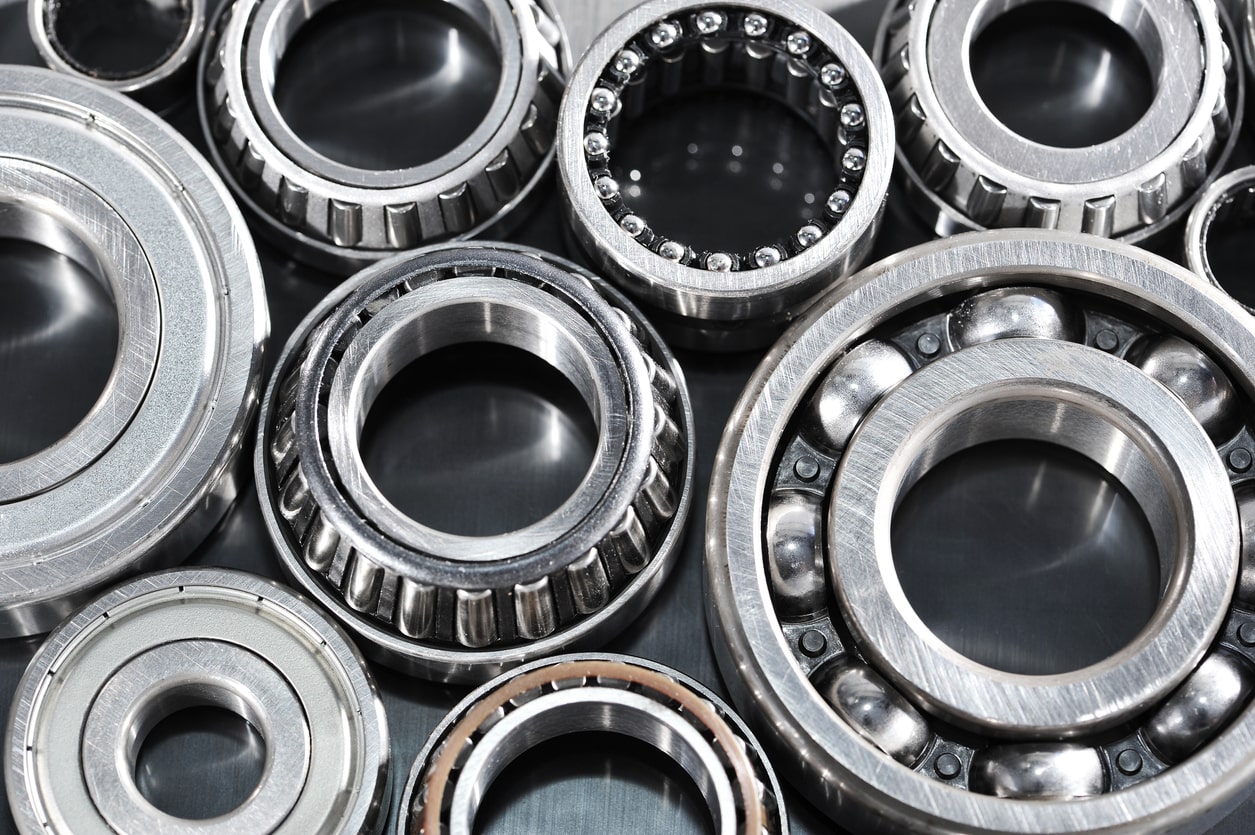Bearings are mechanical parts that help objects to turn by supporting the shaft that rotates inside machinery. Their purpose is to reduce friction and allow smooth rotation that reduces energy use and prevents damage.
The principle of bearings is simple, and they’re used widely in vehicles, electricity generators and a large variety of machinery. They’re vital for many industries but they’ll only work effectively in a particular application if you use the correct type of bearing from the wide range that’s available.

Types of Bearings
Choose the best type of bearing for your application:
- Ball bearings generally rotate very quickly but cannot support very high loads, the balls rolling along a raceway and providing contact with the object being supported. They offer a variety of cage types, quiet and smooth operation at high speeds, durability in harsh environments and come in different types:
- Deep-grooved ball bearings are the most common type and are used in applications where high speeds and low power loss are needed. Their simple design means they are easy to install and maintain, can handle radial forces and moderate axial loads in both directions and are available in a variety of configurations.
- Angular contact ball bearings allow transfer from one raceway to another at a particular angle and are often installed in pairs or multiple sets.
- Thrust ball bearings absorb axial forces in one direction and have a housing washer with raceway grooves for the balls. They are available in single and double-direction designs.
- Our Roller bearings available in Australia provide line control that offers higher load ratings than ball bearings although at lower speeds due to increased friction. Industrial roller bearings are available in various forms:
- A cylindrical roller bearing has a high radial load capacity and is suitable for high-speed applications with low noise and low heat generation. A cylinder bearing uses line contact between the rolling elements and the raceways to optimise the distribution of stress factors and allow a high radial load rating.
- Tapered roller bearings absorb high radial and axial forces in one direction but can be arranged in pairs to support forces in both directions.
- Needle roller bearings have long and thin rolling elements so are useful where space is restricted. They have a high load rating and are suitable only for radial forces.
- Self aligning roller bearings are used when the shaft and housing may be out of alignment or the shaft may bend. Misalignment may be up to seven degrees and axial load capacity for a self aligning bearing is relatively low due to a small contact angle.
Bearings for All Applications and Conditions
The different types of bearings are available in various forms and materials so they can be optimised for different applications. These include trailer bearings that are available in complete kits that may comprise taper roller bearings or ball bearings with seals and clips so they’re ready to use.
For marine applications, a marine bearing kit will generally be manufactured from marine grade 316 stainless steel that is very resistant to the corrosion resulting from seawater and salt spray as well as being able to operate in extremes of temperature.
Bearings are so vital for so many applications that it’s essential that exactly the right ones are selected. At Industrial & Automotive Parts (leading automotive parts supplier) , we can advise on suitability and provide customised versions when necessary. We aim to make your application work as efficiently as possible.

